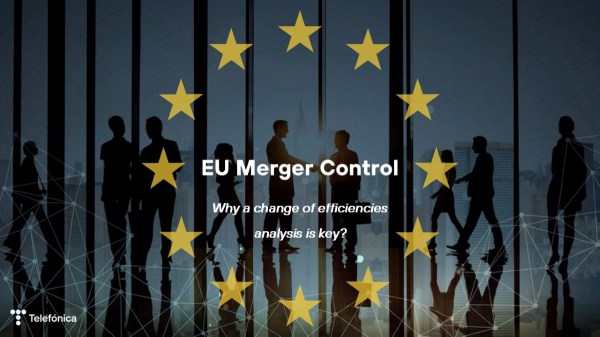Across all parts of our lives, reality may outgrow any structure or rule book that was once set up. What seems like a no-brainer has recently triggered intense debate regarding the current model on investment in Internet infrastructure. A recent academic study from economic consulting firm Compass Lexecon scrutinizes the status quo of investments in internet infrastructure. It finds a structural problem has evolved that prevents European telecom operators from negotiating contributions to infrastructure investments with Large Traffic Generators (LTGs). The report suggests regulatory intervention in the shape of mandatory bilateral negotiations with telecoms operators to rebalance market powers. This would help ensure the sustainable welfare of all parties involved, and specifically of consumers.
But let’s take a step back: In the 90s, when the current model was set up, consumers would send a few emails and receive about the same amount in return, TV was watched via cable coaxial and via antennas, movies were released in cinemas, and home videos were saved on tapes and stored away in a cupboard. No one could foresee the huge amounts of traffic that would flow through these data networks, which would be originated by a small set of players and consumed by the masses. And there is no end in sight: According to Sandvine, an app and network intelligence company, in 2021 globally we consumed 3.2 times more data through fixed and mobile networks than we did in 2018 – a compound annual growth rate of 26%. That growth continues post-pandemic. The internet carried 23% more traffic in 2022 than it did in the year before. Video services fuel that demand, and just six companies dominate the provision of that content. In 2022, their content generated almost half of all internet traffic in Europe.
Consequently, the internet payment models that were initially established no longer fit in today’s environment. This makes investments in internet infrastructure unsustainable for European telecom operators, who estimate they will need to spend at least €15 billion a year simply to ensure their networks cope with the additional pressure from the largest current providers of content. Unsurprisingly, the European Commission has identified there is an investment gap, with €174 billion needed to reach the EU’s Digital Compass 2030 goal which requires that 5G covers all populated areas in the EU by 2030 and 450 million Europeans have access to gigabit broadband.
Market failure: Telecoms’ infrastructure investments create value – but to the primary benefit of large traffic generators
In its recent study, Compass Lexecon scrutinized the status quo of investments in internet infrastructure and has found a market failure. According to the study, telecom operators underinvest in internet infrastructure because the positive externalities of these investments benefit LTGs, not telecom operators themselves. In a nutshell, telecom operators make a return from selling access to the internet to consumers. Their demand for access is insensitive to the quality of this access. However, better-quality access has indeed a strong and positive impact on the demand for content – allowing LTGs to benefit from the telecom operators’ investments.
In the long term, Compass Lexecon finds that LTGs would also suffer from the current market imbalance as limited network capacity ultimately limits subscribers to their services. In some instances, markets can overcome such externalities bilaterally and without any regulatory interference.
LTGs have different reaction possibilities. They could develop more efficient codecs that convey the same content using less data. Moreover, they could invest in Content Delivery Networks (CDNs) that distribute content across multiple servers to bring closer data to the destination more efficiently. Finally, they could negotiate payment agreements with telecommunications operators to ensure that the operators receive a portion of the benefits from their investments, thereby rectifying the aforementioned effect.
According to the report, both levers to ease the market imbalance are currently underutilized. Firstly, this is due to the concern by LTGs that smaller traffic generators would benefit from the infrastructure upgrade financed by LTGs for free. Secondly, telecom operators lack the necessary bargaining power as the European Open Internet Access Regulation prevents them from using the quality of service to discriminate between different types of content provider for commercial purposes. Thirdly, asymmetric and incomplete information on the investment gap destroys trust. Telecom operators have every incentive to exaggerate the investment gap, and little ability to convince skeptical content providers what is genuinely required; and providers have every incentive to downplay the impact telcos’ investments have on their profits, and unwillingness to give them transparency on how such investments improve their profits.
Fair Share proposal would even out market imbalance to the benefit of consumers, LTGs and telecom operators
Compass Lexecon finds that a win-win-win situation for consumers, LTGs and telecom operators can be achieved in the shape of bilateral negotiations with mandatory arbitration. The alternative, a direct regulation with the regulator setting the contribution each party should pay, is considered too difficult and expensive to set up and execute.
Additionally, the authors argue that for the first option, traffic-related payments are easiest to negotiate as traffic can be observed, monitored and verified, and properly calibrated per-unit traffic fees can provide telecom operators with the appropriate incentives and solve the underinvestment problem.
This way, the telecom operators and LTGs could break free from the current impasse and unlock potential investment, the ultimate beneficiaries of which would be consumers, who will enjoy better access and better content. At the same time, better access would consequently enable LTGs to invest in new content.
Also, many of the prospects for future economic growth and innovation depend on the internet delivering data in copious volumes at high speed with high-fidelity and low latency. Telehealth, online education, and the expansion of hybrid working all require reliable internet connections. New applications, such as the Metaverse, the Internet of Things, and mission critical services also depend on a step change improvement in the capacity and quality of our access to data.
Estimates of the positive economic impact – directly and indirectly – are enormous. 5G technology, in which telecoms could invest part of the new revenues, is expected to underpin new services and generate productivity improvements across a range of established industries, from improving the detection of defects in manufacturing processes, to reducing waste in agricultural production – in total, Accenture, a consulting firm, estimates it will add €1.0 trillion to European GDP between 2021 and 2025.
To unlock this potential for our joint welfare, acting fast to find a win-win-win solution to correcting the current market imbalance, identified by Compass Lexecon, will be crucial.









